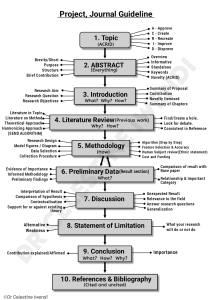 Dr. Celestine Iwendi, a distinguished Reader at the University of Bolton, offers invaluable guidance for researchers aiming for excellence in their work. His updated ACRID approach—Approve, Create, Recreate, Improve, Disprove—serves as a game-changer in every research endeavor. This comprehensive framework helps researchers select impactful topics, ensuring their work is innovative, relevant, and contributes to the academic community.
Dr. Celestine Iwendi, a distinguished Reader at the University of Bolton, offers invaluable guidance for researchers aiming for excellence in their work. His updated ACRID approach—Approve, Create, Recreate, Improve, Disprove—serves as a game-changer in every research endeavor. This comprehensive framework helps researchers select impactful topics, ensuring their work is innovative, relevant, and contributes to the academic community.
Choosing a Topic
In the pursuit of research excellence, the ACRID approach is utilized to choose a topic, offering a roadmap for advancing scholarly pursuits. ACRID emphasizes acknowledging existing knowledge, fostering innovation, challenging established paradigms, striving for continuous improvement, and scrutinizing assumptions. By adopting this approach, researchers can enhance the quality, relevance, and impact of their work, contributing to a culture of academic and scientific excellence.
Abstract
The abstract is often the first point of contact between the reader and the research. Crafting an effective abstract is crucial as it serves as a concise summary of the study, capturing its purpose, structure, and key findings. Researchers must master the art of creating abstracts that balance brevity with informativeness, ensuring their work garners the attention it deserves.
Introduction
The introduction sets the stage for the research by outlining its overarching aim, specifying the research question, detailing objectives, and highlighting anticipated contributions to the field. It serves as a roadmap, guiding the reader through the proposal’s structure and engaging their curiosity from the outset.
Literature Review
The literature review is a cornerstone of any research proposal, providing the rationale for the study by connecting it to existing knowledge. This section involves synthesizing prior research, evaluating methodologies, identifying gaps, and engaging with academic debates. A well-executed literature review not only summarizes existing work but also lays a robust foundation for the research, demonstrating its significance and relevance.
Methodology
The methodology section is a blueprint for achieving the research aims, detailing the research design, data collection methods, and analytical approaches. It includes step-by-step descriptions, model figures, and ethical considerations, ensuring the research is both feasible and rigorous.
*Preliminary Data (Results)
Preliminary data is crucial for laying the groundwork for the study’s discussion and conclusions. By presenting initial findings clearly, comparing them with base studies, and identifying relevant categories, researchers can position their work within the broader academic landscape.
Discussion
The discussion section involves interpreting the results, comparing them with hypotheses, and contextualizing the findings within the broader field. Addressing unexpected results and discussing their relevance enhances the study’s contribution to existing knowledge.
Statement of Limitation
Acknowledging the limitations of the study is essential. Providing a candid statement about the study’s boundaries and weaknesses helps contextualize the findings and sets realistic expectations for the research’s impact.
Conclusion
The conclusion reaffirms the research’s contribution, explaining the significance of the findings and their implications within the field. It emphasizes the importance of the work and its potential to influence future research.
References
A well-curated reference list is crucial for acknowledging prior work and grounding your research within the existing literature. Accurate and consistent citations not only give credit to original authors but also provide a foundation upon which your work builds. References should include all sources cited in the research, demonstrating a comprehensive engagement with the relevant academic material.
Bibliography
In addition to the references, a bibliography should be included to list all the materials consulted during the research process, even if they are not directly cited. This broader list offers readers additional resources for further exploration and reflects the depth of your research efforts. Ensuring both the reference list and bibliography are thorough and properly formatted enhances the credibility and scholarly rigor of your work.